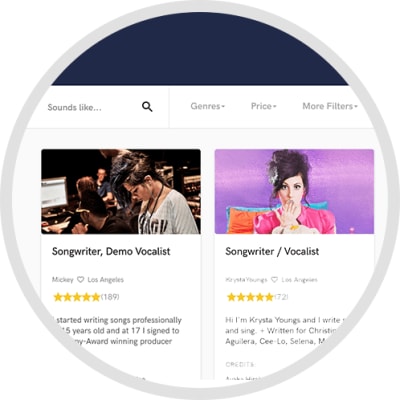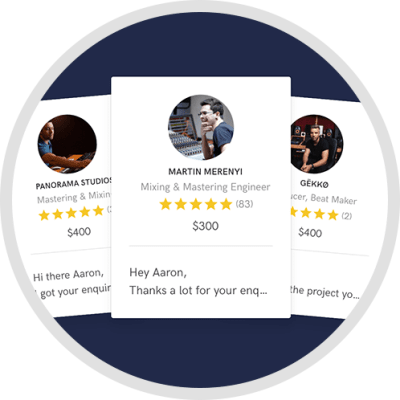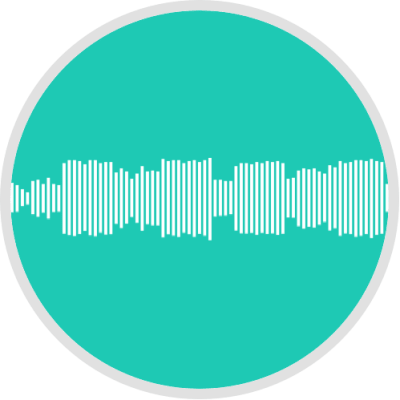
I’m an audio engineer and music producer with 8+ yrs of experience in mixing, mastering, and sound design. I’ve worked on soundtracks for film, TV (Netflix, CNN), and innovative music projects. Specializing in ambient music, synthesizers, and immersive soundscapes, I bring a creative and technical approach to elevate your project.
I’m an audio engineer, music producer, and sound designer with over 8 years of experience crafting immersive soundscapes for film, TV, and music projects. I specialize in mixing, mastering, and creating ambient music with synthesizers, blending technical precision with creative artistry. My work includes additional music for Netflix series like 'Who Killed Sara?', session pianist for CNN’s 'Searching for Mexico', and recording engineer and assistant production for award-winning films like 'Radical' (Sundance 2023). I am also the synth player of latin grammy nominee rock band San Pascualito Rey.
I’ve collaborated with composers, directors, and artists to deliver exceptional sound quality, whether it’s for cinematic scores, promotional spots, or experimental music. My expertise spans Pro Tools, Logic Pro, and Ableton Live, and I’m passionate about designing unique sonic textures that elevate storytelling.
Whether you need a polished mix, a captivating sound design, or a full production from scratch, I’m here to bring your vision to life. Let’s work together to create something unforgettable!
Send me a note through the contact button above.
Languages
- English
- Spanish
Interview with Giancarlo Bonfanti
Q: What's the biggest misconception about what you do?
A: One of the biggest misconceptions about what I do is that it’s all about technical skill and not as much about creativity. Many people think audio engineering and music production are purely technical jobs—focused only on mixing levels, EQ, and other technical aspects of sound. While those skills are important, the true essence of what I do is in the creative process: finding the right sound, experimenting with different textures and elements, and crafting a piece of music or sound design that evokes emotion and tells a story. It’s about blending technical expertise with artistic vision to create something that resonates on a deeper level. Another misconception might be that producing and mixing are one-size-fits-all jobs. Each project has its own unique challenges, and I tailor my approach based on the specific needs of the artist, the project, and the overall vision. It’s not just about following a set of steps—it’s about problem-solving, adapting, and finding the best possible solution for each situation.
Q: What questions do you ask prospective clients?
A: What is the overall vision for the project? This helps you understand their big picture goals and the direction they want the project to go in. What is the intended mood or emotion you want to convey with the music or sound design? This question will give you insight into the emotional impact they want the work to have, which is essential for crafting the right sound. Who are the main influences or reference points for the sound you're going for? Knowing which artists or sounds resonate with them can help you align your work with their preferences and expectations. What is the project timeline and are there any key deadlines I need to be aware of? Understanding the timeline helps you manage your schedule and ensure you deliver on time. What is your target audience? This can help you tailor the sound to resonate with the specific group of people the client is aiming to reach. Are there any technical requirements or specific tools you want me to use or avoid? Whether it’s a certain style, instrument, or technology, this helps you know if the client has preferences that you need to respect. What is your budget? Understanding the budget allows you to discuss the scope of the project and ensure that you can meet their expectations within the financial framework. How involved do you want to be in the creative process? Some clients prefer to be hands-on, while others trust you to make creative decisions. This helps you understand how to best collaborate. What’s the next step once we finish this project? Knowing their long-term plans can help you align your work to fit into their broader strategy, whether it’s for a series of tracks, a film score, or something else. Do you have any specific formats or delivery preferences for the final product?
Q: What advice do you have for a customer looking to hire a provider like you?
A: When hiring a provider like myself, it's important to look for someone who not only has the technical expertise but also the passion and creativity to bring your vision to life. Here are a few key things to keep in mind: Collaboration is Key: I believe in open communication and a collaborative approach to each project. Whether it’s mixing, producing, or composing, it’s crucial that we align on the vision and sound you want to achieve. My goal is to create something that resonates with you and your audience. Understanding of Sound and Emotion: My background in both music composition and audio engineering allows me to approach projects from a holistic perspective. I’m not just focused on the technical side of things—I also strive to evoke emotions through sound, creating music that’s not only well-engineered but also meaningful. Customization and Flexibility: Every project is unique, and I tailor my work to suit the specific needs of the client. Whether you're looking for an experimental sound design for a film score, a polished production for an album, or anything in between, I have the flexibility and skills to deliver. Commitment to Quality and Detail: I take great pride in the quality of my work. From sound design to mixing, I ensure that every detail is carefully crafted, so the final product stands out and meets the highest standards. Experience and Versatility: With my experience across a variety of genres and roles—whether it’s working with artists, producing music, or mixing for different media—I can adapt to various styles and genres. My technical skills, combined with my creative approach, make me an ideal fit for a wide range of projects. If you want someone who can bring both technical precision and artistic vision to your project, then I’d be a great fit for your needs!
Q: If you were on a desert island and could take just 5 pieces of gear, what would they be?
A: Laptop, 2 input interface, one mic, Prophet 08 and headphones
Q: What was your career path? How long have you been doing this?
A: My career path has been an evolving journey, deeply rooted in a passion for both music production and sound engineering. I studied music in the UK, where I developed a strong foundation in music theory and composition. Later, I studied audio engineering in Mexico, which helped me build a technical skillset in recording, mixing, and mastering music across various genres. Over the years, I’ve had the opportunity to apply these skills in professional settings, shaping my approach to sound design. Alongside this, I’ve always had a deep curiosity about music production, which led me to delve into synthesizers and modular gear. This exploration became a major focus in my work as I sought to create more intricate and experimental sounds. I’ve been producing music for my own artist project, SSANTI, and collaborating with others for some time now. In parallel, I’ve worked as an assistant to a composer, gaining further insight into film scoring and commercial music production. My musical style has been influenced by the blending of my work in both technical and creative roles. I’ve been honing my skills for several years now, balancing my passion for synthesizers and sound design with my work as a producer and mixer. The journey continues to evolve as I work towards making SSANTI my primary focus, expanding my creative horizons and pushing boundaries with every project.
Q: How would you describe your style?
A: My style blends electronic and organic elements, often weaving intricate textures and pulses with a sense of emotional depth. I love experimenting with modular synthesis to create evolving soundscapes that are both atmospheric and dynamic. My music carries an introspective, cinematic quality, drawing inspiration from a variety of genres like ambient, neo-classical, and experimental. I enjoy blending the digital with the organic, sometimes evoking nostalgia or exploring liminal spaces, while also embracing the raw and unpredictable nature of live performance. Overall, I aim to create music that resonates on a personal level, taking listeners on a journey of emotional discovery.
Q: Which artist would you like to work with and why?
A: I’d love to work with artists who challenge conventional sounds and are open to experimentation, like Jon Hopkins or Kaitlyn Aurelia Smith. Their ability to blend electronic, ambient, and organic elements would complement my approach to sound design and synthesis. I’m drawn to their unique perspectives on creating emotionally immersive music, and I think it would be exciting to explore new sonic territories together. Their ability to blend intricate textures and emotional depth aligns with the type of music I create, and collaborating would push both of us to explore uncharted creative ground.
Q: Can you share one music production tip?
A: Experiment with contrast to make your production more dynamic and engaging. Play with light and dark, tension and release, organic and synthetic elements to keep the listener hooked. For example, pairing a lush analog synth pad with a crisp digital texture or a raw acoustic sound with a processed, glitchy effect can create depth and movement. Don’t be afraid to leave space—sometimes, what you don’t add is just as important as what you do.
Q: What type of music do you usually work on?
A: Electronic, Alterenative Rock, Ambient, Pop Rock, and Classical
Q: What's your strongest skill?
A: My strongest skill is shaping sound to create emotion and depth. Whether through mixing, synth arrangements, or composition, I know how to bring clarity, energy, and character to a track. I have a great ear for balancing elements in a mix and crafting unique textures with synths and modular gear. More than just technical work, I focus on making every song or score feel alive and impactful.
Q: What do you bring to a song?
A: I bring depth, emotion, and sonic identity to every song I work on. My goal is to enhance the artist’s vision while adding a unique touch that makes the track stand out. 1. Clarity & Balance in the Mix I ensure that every element—vocals, drums, synths, textures—sits perfectly in the mix, creating a dynamic and immersive listening experience. My hybrid analog-digital approach brings warmth, punch, and clarity while keeping the sound modern and polished. 2. Unique Sound Design & Synth Arrangements With my experience in Eurorack modular synthesis, Moog synths, and ambient textures, I add layers of depth and movement that elevate the production. Whether it's deep, evolving pads, punchy arpeggios, or atmospheric textures, I tailor every sound to fit the emotional intent of the song. 3. Cinematic & Storytelling Elements For film and TV compositions, I create music that tells a story and enhances the emotional impact of a scene. I blend organic and electronic elements to craft immersive soundscapes that feel both intimate and expansive. 4. Attention to Detail & Artist Collaboration I don’t just mix—I listen. I take the time to understand the artist’s vision and bring their ideas to life while offering my own creative input. My approach is always collaborative, ensuring that the final result feels authentic, powerful, and emotionally engaging. Whether it’s a punchy rock mix, an intricate electronic arrangement, or a cinematic score, I bring depth, energy, and a signature sonic character to every project.
Q: What's your typical work process?
A: My Typical Work Process 1. Understanding the Vision Every project starts with a conversation. I like to understand the artist’s or client’s vision—whether it’s a song, a film score, or a synth arrangement. I ask for reference tracks, creative notes, and any specific preferences before diving into the work. 2. Organizing & Prepping For mixing, I carefully organize and clean up the session, balancing levels, gain staging, and ensuring all elements are sonically clear. For synth arrangements or sound design, I map out the structure and tonal palette before starting experimentation. 3. Creative Processing & Sound Design Mixing: I shape the mix with EQ, compression, and effects, ensuring depth, warmth, and clarity. I use a hybrid approach, incorporating both analog gear and digital tools. Synth & Sound Design: I create and tweak sounds using my synths and Eurorack system, Moog synths, and virtual instruments, layering textures to add emotion and movement. Composition & Scoring: I focus on storytelling through music, blending organic and electronic elements to create cinematic soundscapes. 4. Refinement & Client Feedback I always aim to get the first version sounding as close as possible to the client’s vision. I send a first mix or draft for feedback, then refine it based on their notes. The package includes two revisions, but I ensure every detail is dialed in before final delivery. 5. Final Delivery Once approved, I export the final mix or composition in the requested formats, making sure it’s optimized for its intended platform (streaming, film, or live performance). Throughout the process, communication is key—I keep my clients updated and ensure they’re completely satisfied with the final product.
Q: Tell us about your studio setup.
A: My studio is designed for high-quality mixing, sound design, and production, combining analog warmth with digital precision to achieve professional results. Monitoring & Acoustics I mix and produce using Yamaha HS7 monitors, known for their flat response and accuracy, ensuring that my mixes translate well across different playback systems. My studio is acoustically treated to provide a balanced and detailed listening environment. Hardware & Synths I incorporate a hybrid analog-digital workflow, using a combination of outboard gear and powerful software tools: Mac Studio Pro Chip M2 Max (2024) Nord Stage 2 David Smith's Prophet 08 Eurorack Modular System (Mutable Instruments, Make Noise, ALM, Erica Synths, Intellijel) for unique sound design and textures Moog Grandmother & DFAM for rich analog synth tones and percussive elements Clarett 8Pre USB Interface for clean, high-quality recording and playback Software & Plugins I work in Pro Tools, using a collection of top-tier plugins for mixing and production: Plugin Alliance Bundle, Soundtoys, Saffari Pedals, iZotope, Valhalla and more for precision mixing and creative processing Kontakt & Spitfire Audio for cinematic and orchestral elements Modular VSTs & Granular Synths for experimental textures This setup allows me to mix, design sounds, and compose with a balance of clarity, depth, and creative flexibility, delivering high-quality results for my clients.
Q: What other musicians or music production professionals inspire you?
A: I’m inspired by artists and producers who push sonic boundaries while maintaining emotional depth in their music. Some of my biggest influences include Jon Hopkins for his immersive electronic textures, Ólafur Arnalds for his blend of neoclassical and modern production, and Brian Eno for his pioneering work in ambient music and sound design. I also admire Nigel Godrich (Radiohead’s producer) for his ability to create lush, atmospheric mixes, and Trent Reznor & Atticus Ross for their cinematic approach to composition and soundscaping. On the modular synthesis side, artists like Alessandro Cortini and Floating Points inspire me with their deep, evolving textures and creative use of synthesis. All of these artists have shaped my approach to mixing, sound design, and composition, encouraging me to blend analog warmth with modern digital techniques to create unique sonic experiences.
Q: Describe the most common type of work you do for your clients.
A: The most common work I do for my clients includes mixing, synth arrangements, sound design, and composition for film, TV, and music productions. I offer professional mixing with a hybrid analog-digital approach, ensuring warmth, depth, and clarity across genres like rock, indie, electronic, ambient, and experimental music. I work closely with artists and producers to enhance their vision, whether it's making vocals sit perfectly in the mix, sculpting dynamic drum sounds, or creating immersive sonic textures. Beyond mixing, I specialize in synth programming, modular synthesis, and custom sound design, crafting unique atmospheres, arpeggios, and textures tailored to each project. I also compose original music for film, TV, and media, blending organic and electronic elements to create evocative, cinematic soundscapes. Whether you need a mix that elevates your track, rich synth layers to add depth, or a custom composition for a visual project, I’m here to bring your ideas to life with a professional and artistic approach.

I was the Producer, Synthetist, Programmer, Mixer and Mastering Engineer in this production
- Keyboards - SynthAverage price - $100 per song
- Sound DesignAverage price - $500 per minute
- Recording StudioAverage price - $500 per day
- PianoAverage price - $70 per song
- Mixing EngineerAverage price - $150 per song
- ProducerAverage price - $400 per song
- Full instrumental productionContact for pricing
50% deposit to start. 2-3 revisions included. Final payment due on delivery. Rush jobs: extra fee. Client owns final product. Files stored for 6 months. Non-refundable deposit. Contact me for issues.
- Portico Quartet
- Kaitlyn Aurelia Smith
- Jon Hopkins
- Mac Studio Pro M2 Max
- Clarett Octopre
- Prophet 08
- Nord Stage 2
- Moog Grandmother and DFAM
- Plaits
- Maths
- Pam's Pro Workout
- Marbles Clone
- Erica Synths Pico DSP
- Erica Synths Pico Mixer
- Intellijel Outs (Eurorack)
10% off for Soundbetter visitors



